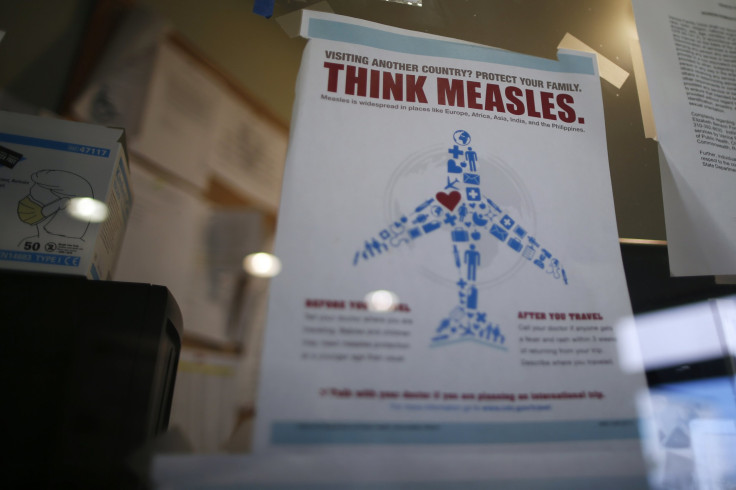Germany Measles Outbreak: Toddler Dies, School Closes After Country's First Death From The Disease Since 2013

An 18-month-old boy in Berlin, Germany, died from measles Monday, and a school in a suburb of the German capital has been closed after a student there contracted the virus, local health authorities said. Germany is currently fighting a serious measles outbreak, including 447 confirmed cases of measles so far this year.
It was not clear how the toddler who died Monday had contracted the virus, according to Berlin Health Senator Mario Czaja. The high school, Carl-Zeiss-Schule, located south of Berlin and one of the city's largest schools, was closed Monday but could potentially be closed for longer. One case of measles had been confirmed among the school’s 1,000 students, and so closing the school was a preventative measure, a spokeswoman for the Berlin Senate Administration for Education, Beate Stoffers, told the Local, a German news website.
"There is one pupil who is very sick with measles, but the school now has to ensure that the contagious period is over," she said. In 2014, two other Berlin schools were closed because of measles. Historically, Germany has had low vaccination rates, particularly among those born between 1970 and 1990.
The U.S. is experiencing its own measles outbreak with 141 cases in 2015, according to the Centers for Disease Control and Prevention. The Local reported that Germany's current measles outbreak has been traced primarily to refugees from Serbia and Bosnia and Herzegovina, although at least two cases appeared to have come from the United States, according to authorities in Berlin. The last measles death in Germany was in 2013, when a teenage boy who had been infected as an infant died from complications related to the virus.
Measles is a highly contagious virus that can be transmitted from one person to another through coughing and sneezing. The germs can also survive on a surface for up to two hours after contamination, according to the CDC.
© Copyright IBTimes 2024. All rights reserved.





















